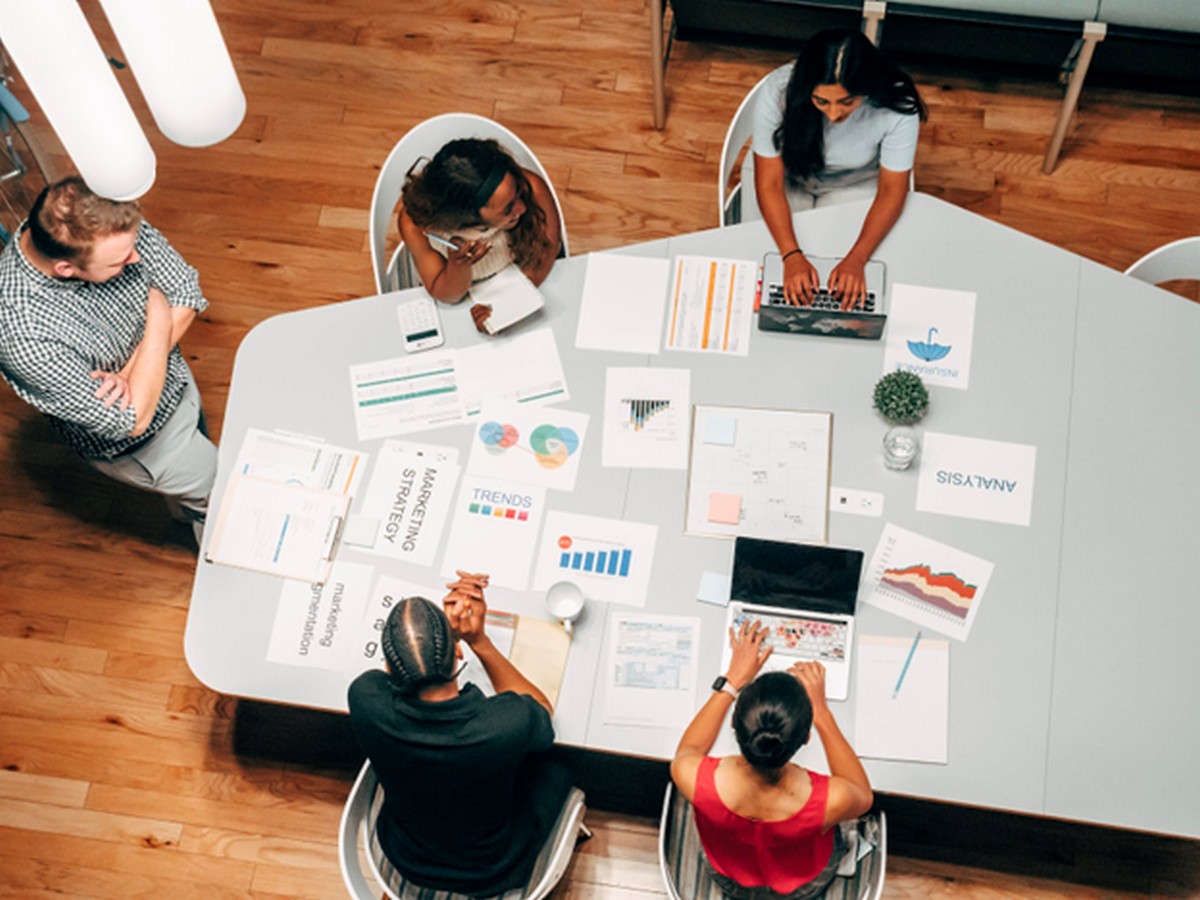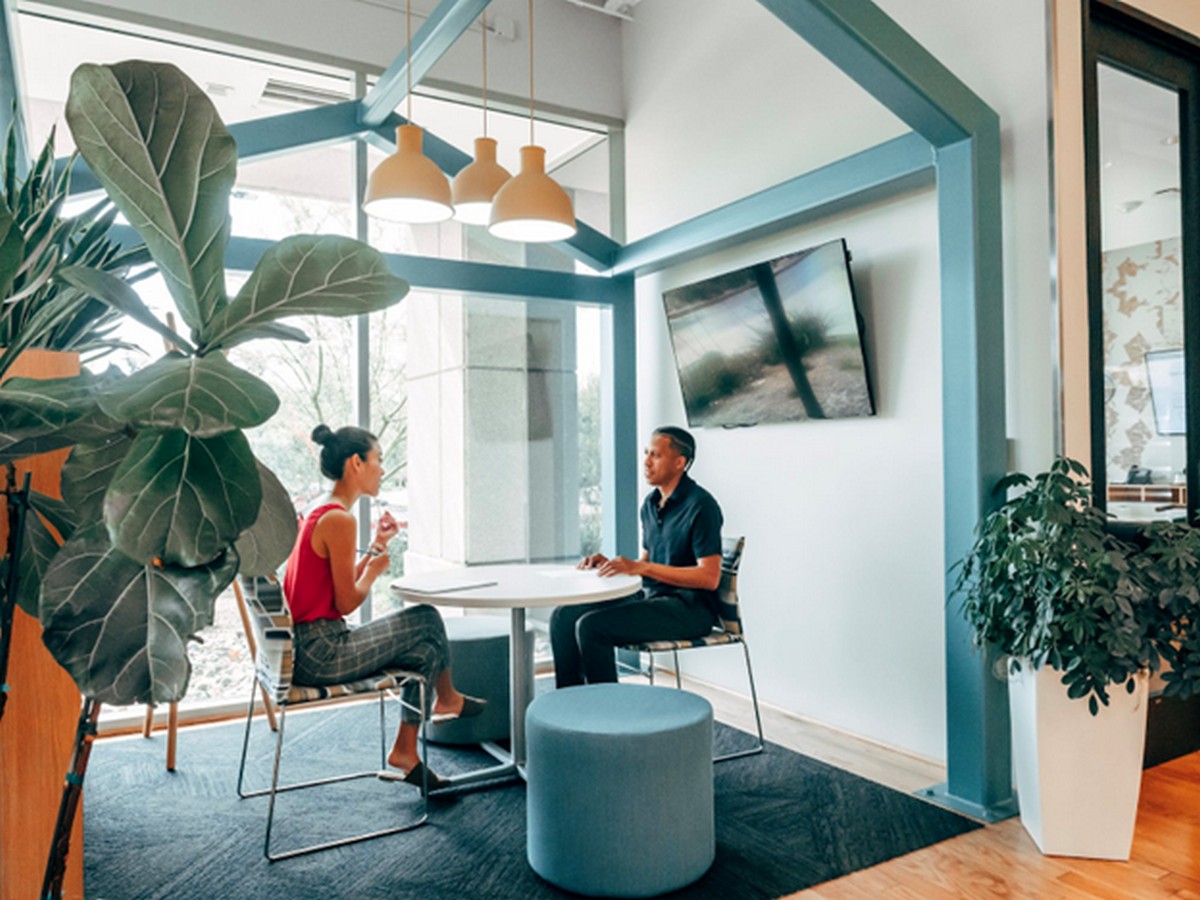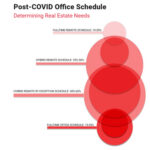The art and science of workplace design, American office design, US commercial property
The Art and Science of Workplace Design
January 25, 2024
Designing for Collaboration: The Art and Science of Workplace Design
For years, the traditional office design dominated workplaces everywhere. This layout plan often involves a more segmented finish, with employees and managers working privately in cubicles or individual rooms. The best part about this office design is that it elevates privacy, allowing workers to boost their productivity by focusing more on their tasks. Plus, it improves security by creating physical barriers that help protect crucial company data.
Although this workplace design remains effective today, one of its many disadvantages is the possibility of isolating employees too much. When that happens, companies sacrifice a crucial factor to their success: collaboration.
When employees returned to their offices after the recent global pandemic, most of them desired flexible arrangements and better connections with their colleagues. This rising trend has significantly shifted how companies arrange their workplace layout. The result is a design that enhances collaboration more effectively than traditional offices.
Read below to learn more about the best design practices for creating a collaborative environment.
Why Optimize Workplace for Collaboration
Adopting a more collaborative workplace design goes beyond achieving the aesthetics of a contemporary office. Creating a working environment built for collaboration helps a company in many ways.
Here are some of the many benefits of a collaborative design.
Enhance productivity and efficiency
Employees can quickly accomplish their tasks or projects if collaboration is high in the workplace. With different teams sharing ideas faster, turnaround times are significantly shorter because members immediately handle revisions and approvals. When that happens, different departments can produce more meaningful output or hit their targets in time.
Collaboration benefits teams in different fields, especially those that require constant brainstorming sessions to generate effective strategies or approaches. These include sales, marketing, and research and development. When these departments streamline their workflows by collaborating, they can boost their company’s success in the market.
Improve employee engagement and retention
Employee engagement is an individual’s mental and emotional connection to their company, team, and job. Generally, when employees are engaged, they will show a high level of commitment to their work and aim to contribute significantly to their company, whether through their work or participation in its culture.
There are many ways to increase employee engagement within the workplace. One of those practices is encouraging two-way communication between their managers and colleagues. If employees find that their ideas are acknowledged and appreciated, they will feel more valued in the team. When that happens, they will likely stay longer with the company.
Redesigning the office to make it more collaborative is an effective way to improve interactions between employees and managers. Instead of isolating them in separate cubicles or rooms, employees will feel more involved in their company’s decision-making process by adopting a more collaborative workplace design.
Meanwhile, aside from retaining existing employees, a modern workspace design can help attract new ones. If prospective employees find that their desired company prioritizes communication and culture, they might become more inclined to sign a contract.
Encourage innovation and creativity
Collaboration is one of the many important aspects of crafting original and creative ideas. When teams go back and forth during brainstorming sessions, they collect ideas from different perspectives. Doing so increases their chances of developing more innovative strategies that will lead to better output, ultimately boosting their company’s success.
Providing a collaborative working environment is an excellent way to foster unique ideas from team members. For instance, employees involved in product development can discover more helpful functionalities when exchanging ideas throughout their design process. Real-time discussions in a more open and interactive workspace will help them produce meaningful items that the target audience may find valuable.
Create a cost-effective and sustainable workplace
A modern office design with open layouts, natural lights, and shared resources helps save companies a significant amount of money. This is because they reduce the need for extensive equipment and spaces to accommodate a traditional workplace style. For example, dedicating one room for whiteboarding or brainstorming is much more cost-effective than providing each department with its own meeting areas.
On a different note, companies save significant money by preventing high turnover because a collaborative working environment helps retain and attract more employees. Plus, fostering an environment filled with collaboration enhances efficiency. Doing so helps avoid redundancy and the added expense of recruiting unnecessary staffing.
Creating a Collaborative Workplace Design
Developing a workspace that encourages team leaders and members to collaborate involves various moving parts. If you want to create a collaborative workplace, below are all the best practices and design elements you should use to achieve such an effect. These tips work well for companies in different industries and structures, whether it’s an LLC startup or a massive business conglomerate.
Layout
Layout is the most crucial part of crafting a collaborative office. How certain items such as desks and chairs are laid out significantly impacts how employees work together.
A modern workspace design often involves an open plan layout, removing all physical barriers, such as office partitions or walls, between employees to encourage better communication. Without such limitations, team leaders and members can better understand each other when exchanging ideas. This fosters a sense of community and enhances collaboration further.
Another excellent layout option is creating specific zones for different activities. This means allotting spaces for brainstorming, solo work, and breaks. Doing so helps increase concentration and productivity. Plus, it reduces distractions in the workplace.
Furniture
Comfort should be a priority when creating a collaborative workspace. This means providing ergonomic chairs and desks is a must to ensure that employees experience uninterrupted work and collaboration in the office.
Moreover, it is also helpful to give them furniture pieces that are easy to move around. Doing so promotes flexibility further by allowing employees to reconfigure their workstations based on their needs. For example, if team members want to huddle for special brainstorming sessions, they might be required to move chairs and desks in certain ways to accommodate such activities. This is an excellent way to support their collaboration more.
Lighting and color
Studies have shown that the brain responds well to different color wavelengths. For instance, we tend to focus or feel more energized when we encounter colors related to the natural environment, like blue or green. Meanwhile, we relax when we see warmer colors, such as red and yellow.
Maximizing these color reactions in the workplace can lead to better productivity, concentration, and, ultimately, collaboration in the office. Good lighting, natural or artificial, is an excellent way to achieve this. Whether incorporating large windows and skylights or installing task and ambient lights, proper lighting can help set the mood and inspire employees to interact more with each other. Generally, many offices incorporate cool blue or white to affect performance positively.
Brightness also plays a crucial role in this area. Poor lighting can strain an employee’s eyes and cause discomfort, leading to fatigue and, in worse cases, headaches. When that happens, teams will have difficulty performing and collaborating.
Acoustics
Sound is a crucial factor in creating a collaborative working environment. Most employees are easily distracted by different background noises, making it challenging to focus on their tasks and collaborate with their colleagues effectively. With proper acoustics, companies can improve communication by reducing workplace distractions.
There are many ways to achieve proper acoustics in the office. Among the many ways to gain such an effect is by arranging areas based on activities. For instance, creative teams often require constant back-and-forth communication when solving their copy or graphic design problems. Those who do such work need real-time feedback from their team leaders and other members to build a better idea. At the same time, they also need quiet spaces to help them craft their best work.
To help support this, companies can allot dedicated spaces where teams can hold brainstorming sessions and conduct work privately. Doing so will help divert noise and allow employees to focus on tasks with fewer distractions. Separating break areas is also an effective way to improve acoustics and reduce interruptions.
It would also help to invest in certain design elements to help improve workplace acoustics. These include adding soft surfaces like carpets and ceiling foams. Plants are also excellent additions to absorb and decrease noise in the office.
Technology and communication
Cloud computing solutions continue to create a collaborative working environment by providing centralized access, better communication, and efficient project management. Despite featuring a more open layout, modern workspaces continue integrating these technologies to elevate teamwork further. Some of the best examples of these collaboration tools include Google Drive, Slack, Zoom, and Trello.
For instance, product design teams often go through different processes to launch their desired prototype, from ideation to the final product. With the programs mentioned, they can exchange design ideas with other members and receive approvals in a more organized way. This is not to say that these tools must replace office communication entirely. Instead, they help support these interactions. For example, employees can share their design concepts or product mockups with the rest of the team through the cloud. They can then discuss more about building a better idea in person.
Additionally, these tools enable employees to collaborate with people outside their offices. These include team members overseas, clients, and stakeholders.
Best Practices To Ensure a Successful Workplace Design Project
When optimizing your workplace for collaboration, it’s vital to know that having the proper layout or tools may not be enough. To ensure a successful design execution, here are some of the best practices you should implement.
Balance openness and privacy
A collaborative workplace design often involves a more open layout to encourage more interactions between team members. However, managers and employees are not expected to engage with each other throughout the day. They would still require private or quiet hours to do their work.
The key is to find the right balance between openness and privacy. Provide opportunities for employees to interact with their team leaders and members while having the time alone to concentrate on their tasks. To do this, you should create multiple zones that cater to different activities, whether brainstorming, socializing, or focused work.
Always prioritize comfort
Companies should always prioritize comfort when redesigning their workplace for collaboration. Aside from providing ergonomic furniture, they should optimize every design component in their plan. These include proper lighting, better acoustics, adding natural elements, and an adequate space to unwind.
One way to ensure better workplace comfort is to adopt an online design principle called user experience (UX). In UX design, designers must always preempt how seamlessly an online user interacts with a website or mobile app. Taking that into account, companies should consider how comfortable their employees will be when redesigning their workplace. The aesthetics of it should come after that.
Gather feedback from employees
Finally, the best way to ensure that the new office design works is by asking employees directly about their overall user experience with the concept. Encourage everyone to comment on their current workstations and determine room for improvement. Consider every feedback, whether it’s about the noise levels or the ergonomics of the furniture, and adjust accordingly.
Moreover, regularly asking for feedback gives employees a sense of ownership over their workspace. Doing so increases employee engagement and satisfaction, especially if the company is willing to optimize their workplace based on their encounters.
Craft an Effective Workplace Design
Adopting trends for a more collaborative workplace is an excellent way to boost a company’s success. The key is to always prioritize employee comfort by providing better ergonomics and reducing distractions in the office, whether by installing proper lighting or dedicating areas for different activities. Doing so will help elevate workplace collaboration and produce more meaningful output.
The art and science of workplace design – designing for collaboration information / images received 250124
Architecture in Texas
A US building design by Cushing Terrell Architects on e-architect:
Stockman Bank Missoula Downtown, Montana
Buddy Holly Hall of Performing Arts and Sciences in Texas
American Architecture Design – chronological list
Observation Tower at Circuit of the Americas Texas
Comments / photos for the Designing for Collaboration: The Art and Science of Workplace Design architectural article by Tammy Jones, Director of Human Resources, of Cushing Terrell USA page welcome






